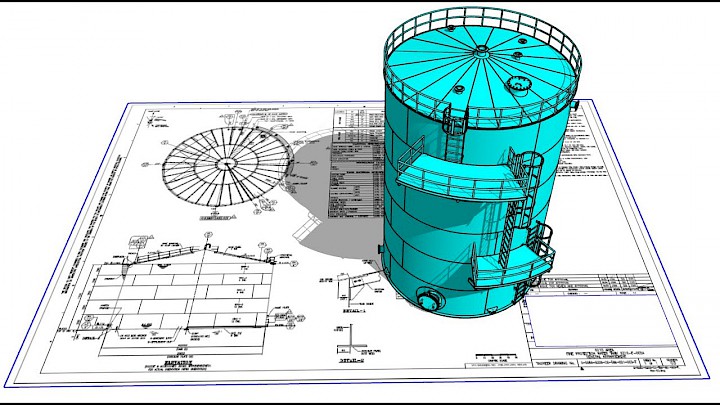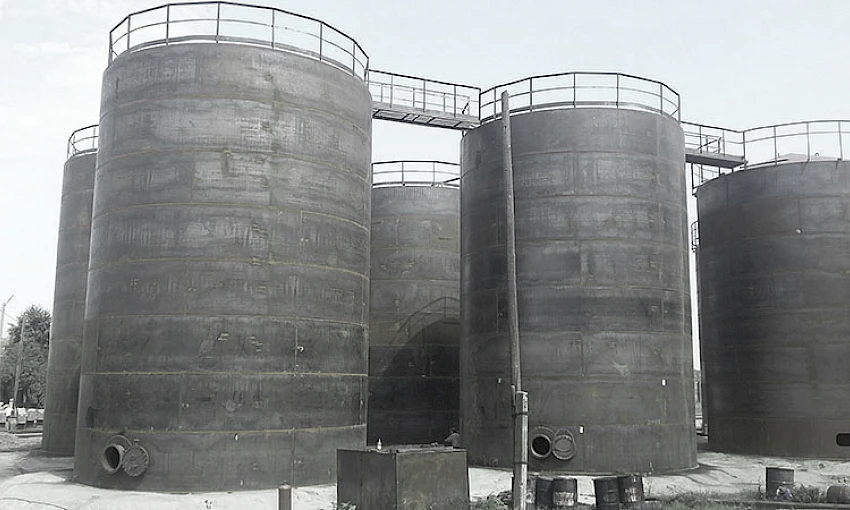Everything About Welding Inspection: Key Benefits for Your Tasks
Welding assessment plays a necessary function in the construction and manufacturing markets. It assures that bonded joints satisfy high quality and safety requirements. By identifying defects early, jobs can prevent financial losses and substantial delays. Sticking to sector guidelines not just protects the integrity of the last product yet likewise builds trust fund among stakeholders. Understanding the nuances of this procedure reveals added benefits that can influence project end results significantly. What are these benefits?
Recognizing the Welding Assessment Process
Welding is a vital part in various markets, the inspection process is important to ensure quality and safety. This procedure entails a series of organized assessments created to identify any prospective concerns that may endanger the honesty of welded joints. At first, assessors review welding procedures and credentials to confirm compliance with market requirements.
Following this, aesthetic evaluations are performed to assess the general appearance and surface of welds. Non-destructive screening methods, such as radiographic or ultrasonic testing, may likewise be utilized to find inner imperfections without harming the material. Documentation plays an important function, as it supplies a record of searchings for and examinations, validating traceability and liability.
Inevitably, recognizing the welding evaluation procedure fosters confidence in the top quality of the ended up item, reduces the danger of failures, and improves overall project success in different applications, from building to manufacturing. API 650 Welding Inspection.
Common Kinds Of Welding Defects
Welding issues can greatly impact the honesty and efficiency of bonded structures, as they might cause failings under stress or adverse problems. Typical types of welding flaws include cracks, porosity, insufficient fusion, and slag inclusion. Cracks can form as a result of thermal anxieties or improper air conditioning, jeopardizing the joint's strength. Porosity describes the existence of gas bubbles trapped in the weld, which can damage the joint and minimize ductility. Incomplete blend happens when the weld metal does not correctly bond with the base material, leading to weak spots. Slag incorporation occurs when non-metallic contaminations end up being entraped within the weld, causing a decrease in structural honesty. Determining these issues early with examination is vital for maintaining high quality and ensuring security in bonded structures. Comprehending these common problems enables improved welding methods and boosted project outcomes.
Relevance of Compliance With Market Requirements
Compliance with market requirements is essential for preserving architectural integrity in welding jobs. Sticking to these standards not only minimizes liability dangers yet also enhances the general quality of the finished work. This positioning cultivates trust among stakeholders and assurances that predicts fulfill both safety and performance expectations.
Making Sure Architectural Integrity
Ensuring structural stability is vital in any kind of building and construction or production project, as adherence to market standards functions as a foundation for safety and dependability. Conformity with these standards assurances that welding refines fulfill strenuous requirements, which is crucial for the longevity of structures. Normal welding assessments validate that methods and products straighten with developed standards, stopping possible failings that could compromise honesty. Furthermore, following industry standards advertises uniformity in quality, which is important for preserving public rely on building practices. By focusing on architectural stability through diligent adherence to criteria, companies can improve the total performance of their projects, leading to more secure atmospheres and prolonged property lifespans. Ultimately, this dedication reflects an aggressive technique to quality control in welding techniques.
Minimizing Obligation Threats
Sticking to industry criteria considerably minimizes obligation threats related to welding projects. Compliance with developed standards guarantees that welds fulfill security and efficiency criteria, lowering the possibility of failings that could result in accidents or litigation. This proactive strategy not only secures the workforce yet also safeguards the economic rate of interests of the company. Insufficient inspections or low quality methods can cause pricey repair work, lawful disagreements, and damage to online reputation. By implementing extensive welding examinations, companies demonstrate their dedication to quality and safety and security, eventually reducing exposure to prospective cases. On top of that, adherence to policies strengthens depend on amongst stakeholders and clients, as it suggests a commitment to keeping high criteria throughout the task lifecycle. Reducing liability dangers is crucial for lasting business sustainability.
Enhancing Project Quality
Rigorous welding assessments not just reduce obligation risks but additionally play a crucial duty in enhancing overall task high quality. By sticking to industry requirements, these assessments guarantee that welds fulfill specified criteria for toughness, security, and durability. Conformity with established standards helps recognize flaws early, decreasing the likelihood of expensive rework or project hold-ups. Consistent top quality control fosters depend on amongst stakeholders, including customers and regulatory bodies, which can lead to repeat organization and positive recommendations. Eventually, a dedication to top notch welding practices not only boosts the integrity of the end product yet likewise promotes the reputation of the organization included. Complete examinations serve as a cornerstone for lasting and effective task outcomes.
Benefits of Early Detection of Problems
Early discovery of welding concerns supplies significant benefits, specifically regarding cost savings on repair services. By determining issues before they intensify, organizations can enhance the structural integrity of their projects. This aggressive strategy not just decreases monetary expenditures yet additionally promotes security and reliability in bonded frameworks.
Price Financial Savings on Services
Detecting welding issues promptly can bring about substantial expense savings on fixings. Early recognition of flaws enables targeted interventions, minimizing the level of damages and avoiding pricey, considerable fixings in the future. When issues are resolved throughout the preliminary stages of a job, sources are used much more efficiently, minimizing both labor and material expenses. Additionally, prompt evaluations can prevent job delays, which usually incur extra expenses. By remedying issues early, business can prevent the economic burden related to rework, warranty cases, and prospective safety and security risks. Inevitably, spending in positive welding inspections promotes an extra economical technique to job administration, ensuring that budget plans continue to why not try here be intact while keeping the quality and dependability of the end product.
Boosted Structural Stability
Making certain the structural stability of bonded elements pivots on the timely identification of prospective concerns. Early detection during the welding examination process enables the prompt rectification of problems such as fractures, gaps, or improper combination. Resolving these issues quickly not just boosts the toughness and resilience of the weld however also alleviates the threat of tragic failings throughout the life span of the structure. Normal examinations add to a more dependable evaluation of weld high quality, making sure conformity with industry requirements. By prioritizing welding evaluations, job managers can maintain a higher level of safety and efficiency, ultimately resulting in successful task end results. Boosted structural integrity reflects the dedication to top quality and adherence to ideal practices in welding.
Cost-Effectiveness of Welding Inspections
While numerous companies may watch welding inspections as an added expenditure, they commonly prove to be an economical investment in the long run. By identifying issues early, these examinations can stop expensive repair services or replacements that may emerge from unseen problems. This proactive approach not just conserves cash however also minimizes task delays, making sure that timelines are stuck to.

Additionally, top quality welding examinations contribute to enhanced effectiveness, leading to fewer rework circumstances and enhanced efficiency. The decrease in product waste and labor costs connected with redoing damaged welds includes to the economic benefits.
Investing in detailed evaluations likewise boosts the overall quality of the end product, which can bring about enhanced client satisfaction and repeat company. Eventually, the preliminary expenses related to welding inspections are typically surpassed by the lasting financial savings and benefits they provide, making them a smart option for any type of welding job.
Enhancing Safety And Security and Integrity in Welding Projects

Welding examinations play a crucial duty in improving security and reliability within welding tasks, as they methodically determine potential hazards and weak points in welds. By utilizing qualified inspectors, companies can ensure that welding processes stick to sector criteria and regulative requirements. This aggressive technique lessens the danger of weld failures, which can bring about crashes, expensive fixings, and project hold-ups.
In addition, inspections give necessary documentation that confirms compliance and quality control, fostering trust fund between stakeholders. Normal evaluations during numerous job phases enable the timely discovery of issues, making it possible for rehabilitative actions before they escalate. In addition, the insights obtained from evaluations add to continuous enhancement in welding practices, enhancing general task outcomes. Eventually, durable welding inspection procedures not just protect workers yet additionally protect investments, assuring that tasks are completed successfully and satisfy the greatest safety and dependability standards.
Regularly Asked Concerns
What Credentials Should a Welding Assessor Have?
A welding inspector should possess appropriate qualifications, such as Qualified Welding Assessor (CWI), along with comprehensive understanding of welding materials, codes, and processes. API 650 Welding Inspection. Experience in the field and click this site strong logical abilities are also important for efficient evaluations
Exactly How Typically Should Welding Inspections Be Carried Out?
Welding assessments must be performed routinely, usually before, during, and after the welding process. The regularity might depend upon project requirements, regulative demands, and the intricacy of the welds to ensure architectural stability and safety.
Can Welding Inspections Be Performed Remotely?
Welding examinations can without a doubt be executed remotely, utilizing innovative modern technologies such as drones, electronic cameras, and ultrasonic screening devices - API 650 Welding Inspection. This approach enables reliable tracking while minimizing the demand for physical existence at the site
What Devices Are Utilized in Welding Inspections?
Welding assessments make use of different devices, consisting of ultrasonic testers, magnetic particle testers, visual inspection devices, radiographic equipment, and calipers. Each device serves a details function to guarantee weld honesty, quality, and compliance with official source market standards.
Exactly how Do I Choose a Welding Examination Service?

To choose a welding evaluation solution, one ought to review certifications, experience, and qualifications. Additionally, assessing client endorsements and requesting in-depth solution descriptions can assist assure the chosen service satisfies particular project demands efficiently.
By focusing on welding assessments, job supervisors can preserve a higher degree of security and performance, ultimately leading to successful job outcomes. Welding evaluations play a crucial function in improving safety and security and reliability within welding projects, as they systematically determine possible hazards and weaknesses in welds. A welding examiner must have pertinent qualifications, such as Certified Welding Inspector (CWI), along with comprehensive understanding of welding codes, materials, and processes. Welding assessments must be performed regularly, generally previously, during, and after the welding process. Welding evaluations utilize various tools, including ultrasonic testers, magnetic fragment testers, aesthetic examination devices, radiographic devices, and calipers.